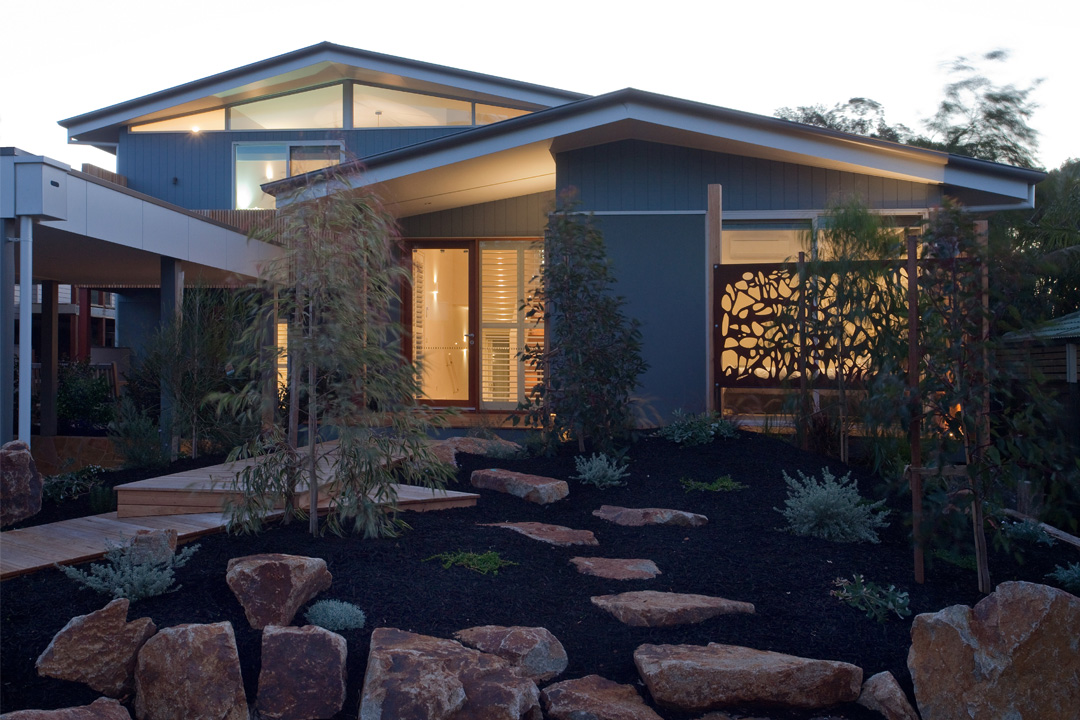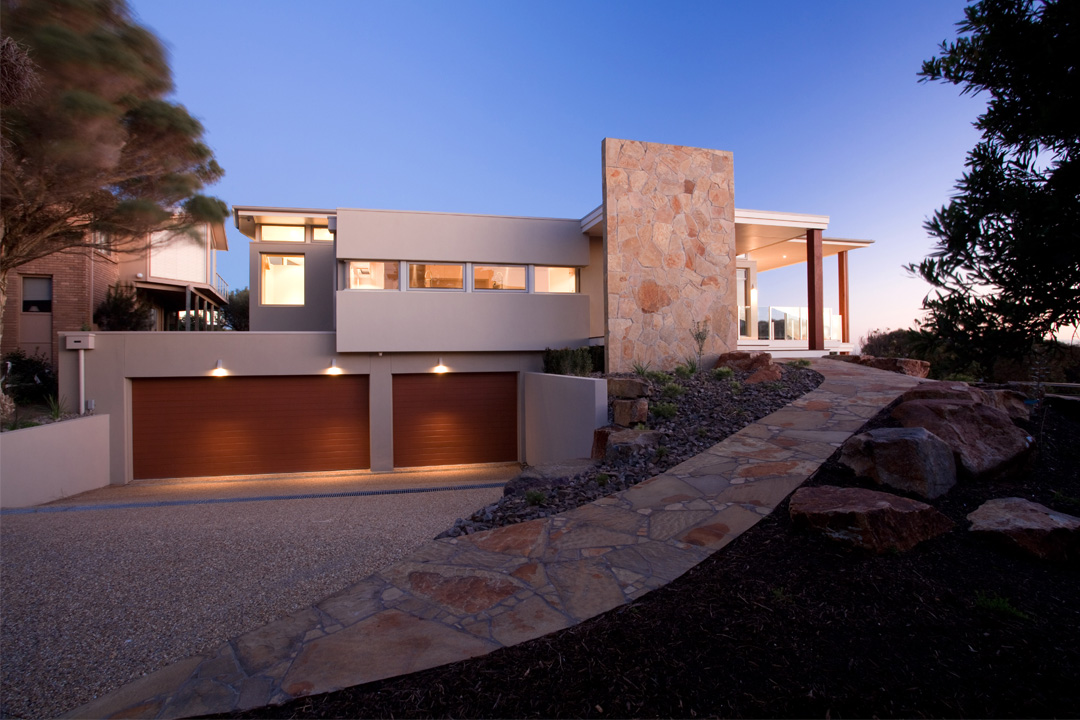
Rise To The Occasion
Simply put, a split-level home has multiple storeys with staggered floor levels. Unlike traditional homes with two levels that are connected by one full flight of stairs, a split-level design will usually have at least three levels, which are integrated with shorter flights of stairs. The merits of split-level design are widely debated among professionals in the building industry. So how do you know if it’s right for you?
Upward Inclined
There are a number of potential benefits to implementing a split-level home design, from reducing overall building costs, to maximising the building’s height and views.
Slope
Designed in close relation to the slope of the land, split levels are best suited to steeper blocks, and can make the house appear as though it’s moulded into the hill. Split-level homes are also well suited to those who are building in established areas along the coast and river, where the natural landscape can be impacted by underground rock or limestone. A split-level design reduces the need for cutting or filling, which can destabilise the general area. In essence, it eliminates the need to level the site, which can be quite costly. As a bonus, a split-level design – with its unique rise-and-fall appearance – will significantly increase a home’s character and add a point of difference.
Cost
Split-level homes are constructed much less regularly than slabdesign (aka single-storey) or traditional multi-storey homes due to the
extensive costs involved in the construction stage. However, if you’re building on a slope, implementing a split-level design will actually cost significantly less than undertaking extensive site works or constructing retaining walls, which would likely be required for a standard design. If you have a strict budget that cannot be negotiated, a split-level design won’t surprise you with hidden costs.
Layout And Accessibility
Split-level homes are renowned for their well-balanced and distinct zones, which are perfect for a growing family. For example, the play area can be separate from the main living space while staying highly visible. Further, split-level homes usually have a flatter driveway, which provides easier access. Split levels are also ideal if you want to refrain from including a vast staircase/s in your design, and want to use smaller flights instead, which will also improve accessibility. “The main benefit in splitting levels is keeping a connection with the land, [which provides] easy access from [the] living space to [the]outdoor entertaining areas, pool and garden,” Graeme Alexander says.
Views
A split-level design is a good idea if you want to achieve a certain height or aspect view. According to Alexander, a split-level home can maximise the view from multiple rooms without obstruction. “It also provides better opportunities for all internal view lines, depending on the site,” he says.
Space
When it comes to the size and shape of internal spaces, your options are abundant. A split-level design will allow for a large voided living space, as well as open passageways, which exude ambience and grandeur. Selecting a split-level design also allows for a larger backyard without compromising the size of your home, which is ideal for those with pets, as well as those who plan to install a beautiful pool.
Upkeep And Adaptability
Designing your home to be more connected to the site will give you the ability to maintain its exterior more comfortably than if it soared high from the ground. Split-level homes are also highly adaptable. While they aren’t typically adorned with ornate features, they do offer a clean slate and morecustomisation options. With an abundance of space, it’s easier to upgrade and adapt your home however you want.


Uphill Battles
Split-level homes are known to be relatively challenging in their design and construction. If you’re considering a split-level design, it’s important to be aware of its unique features, and how these can be used to your advantage.
Flow
The main challenge of designing and constructing a split-level home is creating a smooth flow between the levels. For the best outcome, utilising open-plan sections in the design will make your home feel like it has more space. High ceilings are a common feature
of open-plan, split-level designs as they look fantastic and improve airflow.
Call In The Experts
“[With split-level designs], special consideration has to be given to [the] floor plan’s layout and design lines [in order] to get the best out of the level changes,” Alexander says. Split-level homes usually feature more levels and steps than a standard design, which means they’ll require greater support. To ensure the construction process runs efficiently and smoothly, it’s important to select a designer and builder who have extensive experience with splitlevel homes.
Heaven Ascent
If you’re building on a slope, it’s clear the benefits of implementing a split-level design are far greater than the challenges. Split-level homes are making a comeback, and with the above benefits combined, it’s easy to see why they’re becoming so popular among large families, and why they have stood the test of time since their rise to fame in the 1950s. Provided you take your time devising the layout and seek advice from a building professional, constructing and designing your split-level home will prove to be nothing but an elevating experience.
